Ban Muang Pam a Hidden Hill Tribe Village Preserving Karen Culture
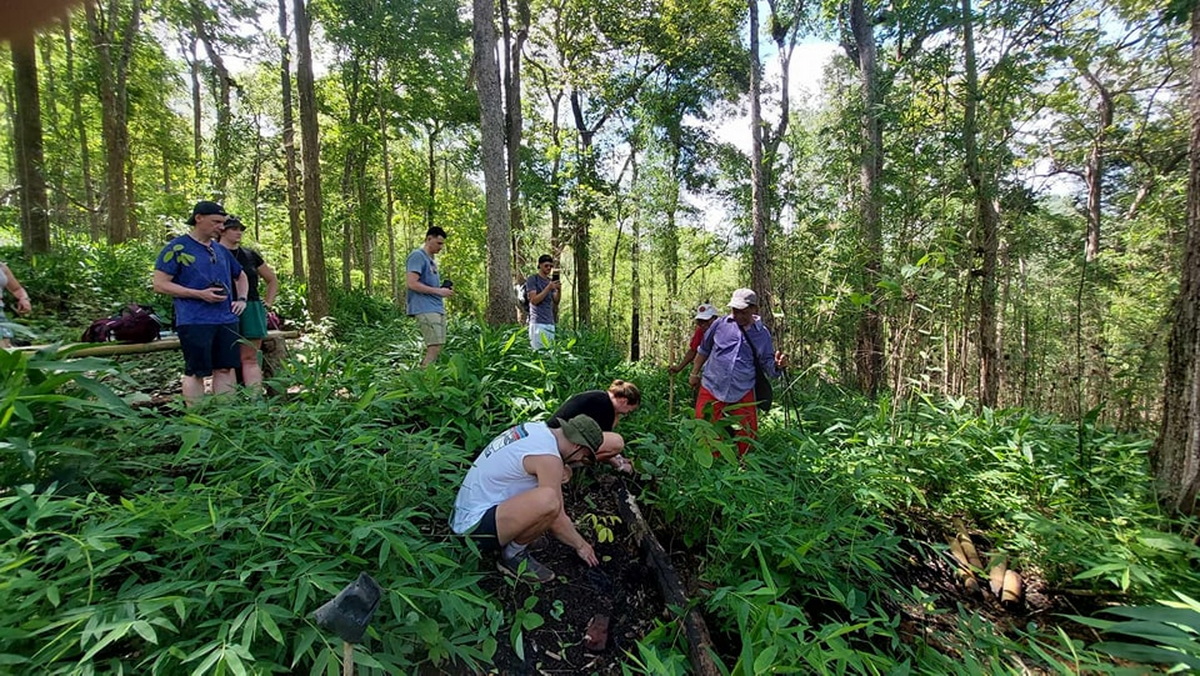
Step into a world where tradition still breathes and nature still sings — Ban Muang Pam awaits with open arms and timeless stories.
General Information
Ban Muang Pam is a remote yet culturally rich village nestled in the lush highlands of Mae Hong Son, Northern Thailand. Located in Moo 5 of Tham Lod Subdistrict, Pang Mapha District, this village is home to the Pgak’yau (Karen) ethnic group, who have preserved their traditional lifestyle, language, and customs in harmony with the forested environment. Surrounded by the vast Pai River Basin and classified within national protected forest zones, the village provides a window into the lives of Thailand’s highland communities — shaped by ancestral wisdom and the rhythms of nature.
Community History and Migration
The official establishment of Muang Pam village dates back to 1961, when Karen families migrated from Ban Mae Yan in Pai District and Ban Huai Phu Ling in Mueang Mae Hong Son District. However, archaeological evidence — including ancient earthen tobacco pipes, pottery shards, and remnants of old temples — indicates that the area was historically inhabited by Lua and Tai Yai communities.
Originally used for shifting cultivation, the villagers settled here permanently, naming the area “Muang Pam,” a reference to the nearby stream that supports year-round agriculture. The development of infrastructure, such as a dirt road connecting the village to Pang Mapha town, came much later, reflecting the village’s isolation and independence from mainstream development.
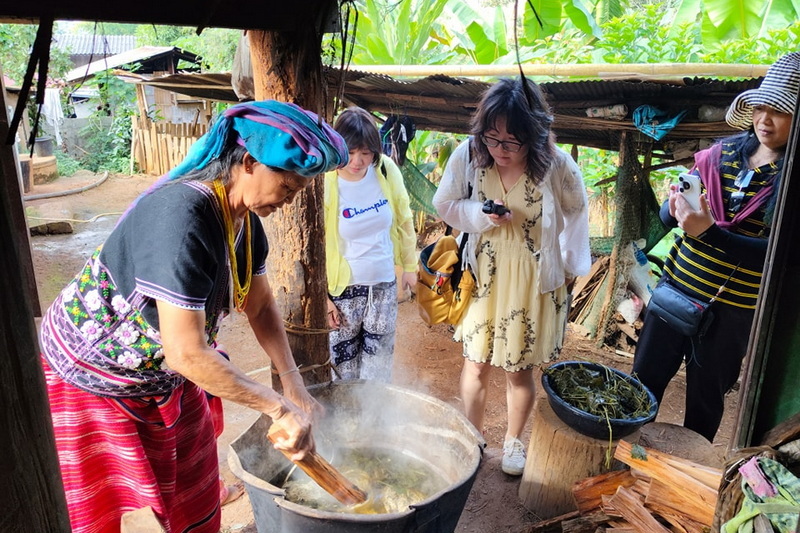
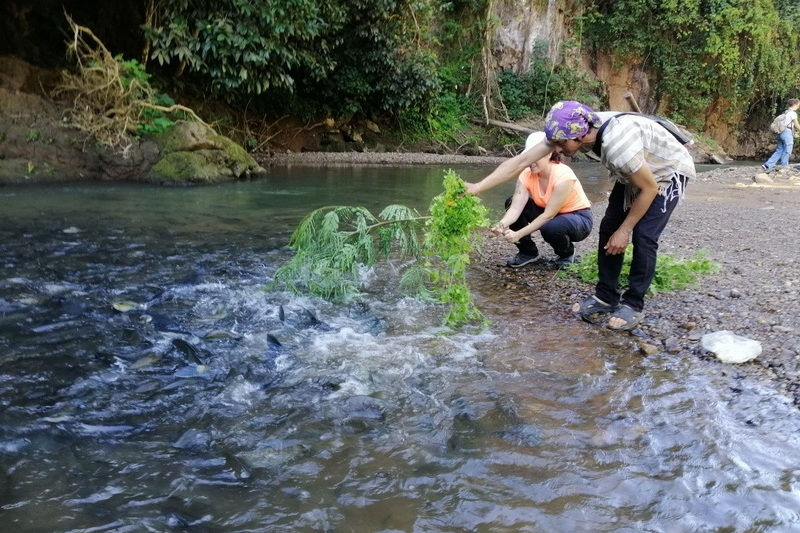
Population and Ethnic Identity
As of December 2023, Ban Muang Pam is home to approximately 616 people in 182 households. The population is predominantly of Karen descent, particularly the Sgaw Karen subgroup. The community speaks both Sgaw Karen and Thai, although the Karen language remains the primary means of communication in homes.
Their self-identification revolves around strong clan-based social organization, spiritual beliefs rooted in ancestor worship and animism, and an enduring respect for village elders and ritual leaders. While the younger generation has increasing access to modern education, many still uphold core Karen traditions and values.
Beliefs and Spiritual Practices
The community observes a blended belief system that includes Theravāda Buddhism and traditional animist practices. Rituals such as spirit appeasement (called “Khaw Mo”) and ancestor offerings are commonly held. Sacred sites within the village — including large trees, natural springs, and community shrines — are strictly respected.
Key annual events include:
-
Buu Sa – A blessing ritual for the rice fields.
-
Pwe Toe Bae – Ancestor worship at clan houses.
-
Karen New Year – Marked by bamboo dances, traditional music, and community feasts.
While a small number of villagers have converted to Christianity, the majority continue to observe ancestral practices alongside Buddhist ceremonies at local temples.
Local Knowledge and Cultural Heritage
The people of Ban Muang Paem are skilled in various forms of traditional craftsmanship and ecological knowledge. Notable practices include:
-
Backstrap weaving: Women weave cotton cloth dyed with natural pigments from plants, bark, and mud. Popular colors include indigo, brown, and ochre.
-
Traditional agriculture: The community engages in rotational farming using techniques that preserve soil fertility and biodiversity.
-
Herbal medicine: Knowledge of forest herbs is passed down through generations, used to treat common ailments with plant-based remedies.
-
Ceremonial storytelling and music: Oral histories, epic tales, and traditional songs are performed during village festivals.

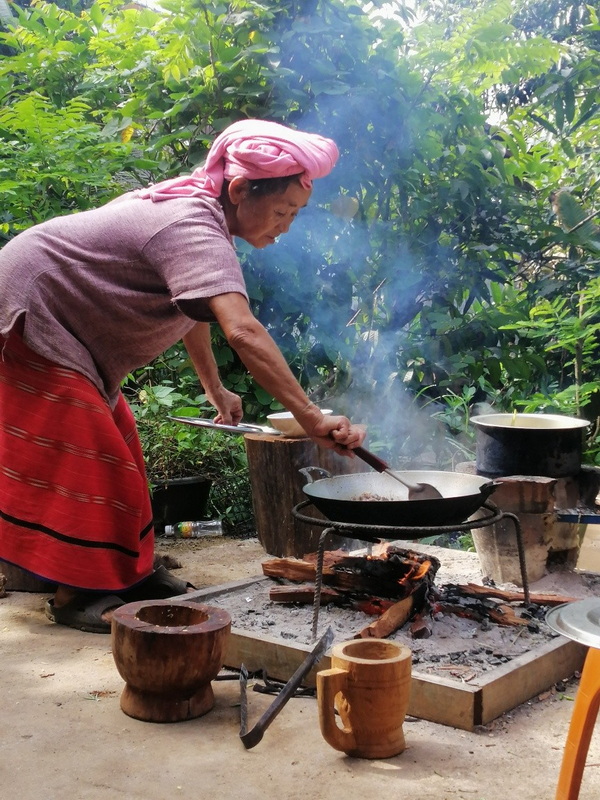
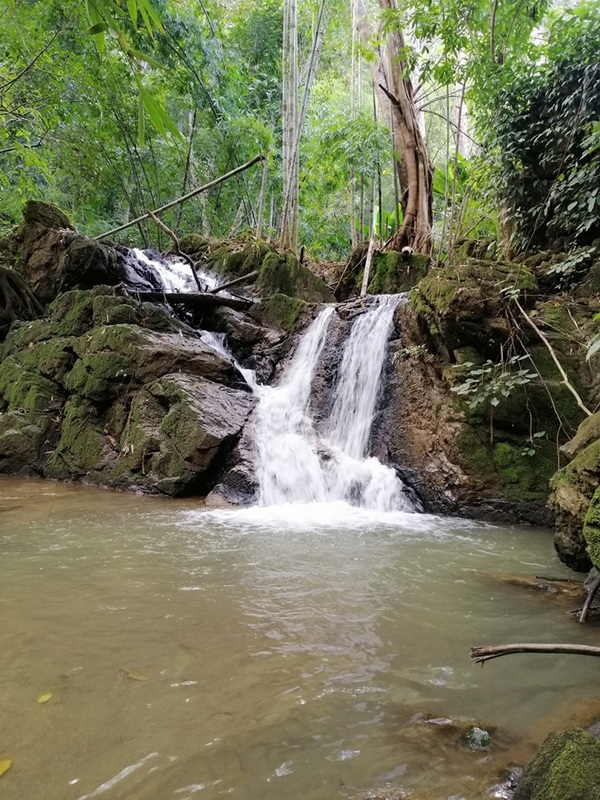
Livelihood and Economic Structure
Farming remains the backbone of the village economy. Families cultivate rice (including native varieties like Bue Pue Kham and Bue Law Khope), corn, vegetables, and beans on terraced fields and rotational plots. They also gather forest products such as bamboo shoots, mushrooms, and wild honey.
Livestock like pigs and chickens are raised for both consumption and sale. Local women supplement income by selling woven textiles and handicrafts to visitors and through local markets. Increasingly, eco-tourism has emerged as a sustainable source of income, involving homestays, cultural experiences, and nature-based activities.
Community Infrastructure and Education
Ban Muang Paem has a primary school offering basic education, and many students travel to nearby Pang Mapha or Pai for higher education. A health promotion center serves the local population with basic medical care and maternal health services.
Electricity and mobile signal coverage have improved in recent years, although internet access remains limited. Roads to the village are steep and narrow, but accessible by four-wheel drive vehicles, especially during dry season.
Community-Based Tourism in Ban Muang Paem
Tourism in Ban Muang Paem is developed under the model of Community-Based Tourism (CBT), which empowers locals while preserving culture and nature.
🌿 Tourist Activities Include:
-
Trekking to Doi Klang and exploring the pristine forests and waterfalls.
-
Visiting weaving houses to learn natural dyeing techniques and Karen loom weaving.
-
Participating in cooking classes using local ingredients such as pumpkin flowers, wild bamboo, and forest mushrooms.
-
Joining spiritual rituals with village elders (by permission).
-
Homestay accommodation in traditional bamboo houses with panoramic mountain views.
Prices are affordable, starting at 150–300 THB per night, with optional trekking and cultural programs arranged by local guides.
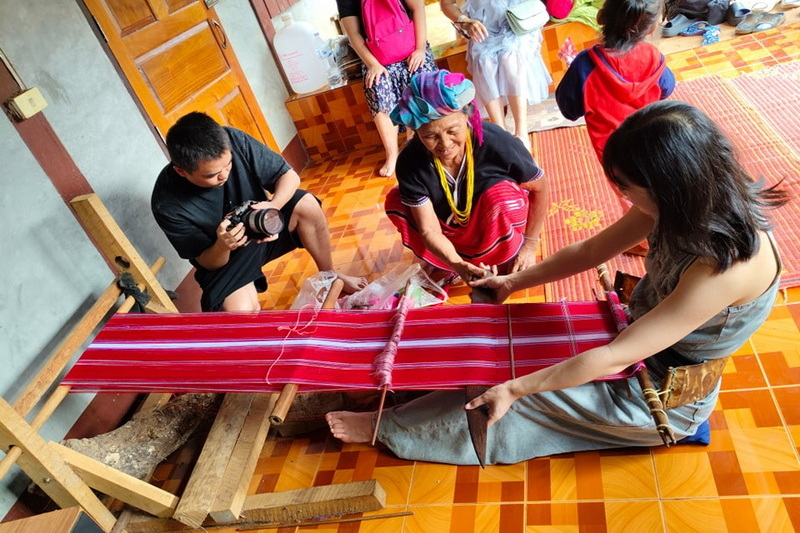
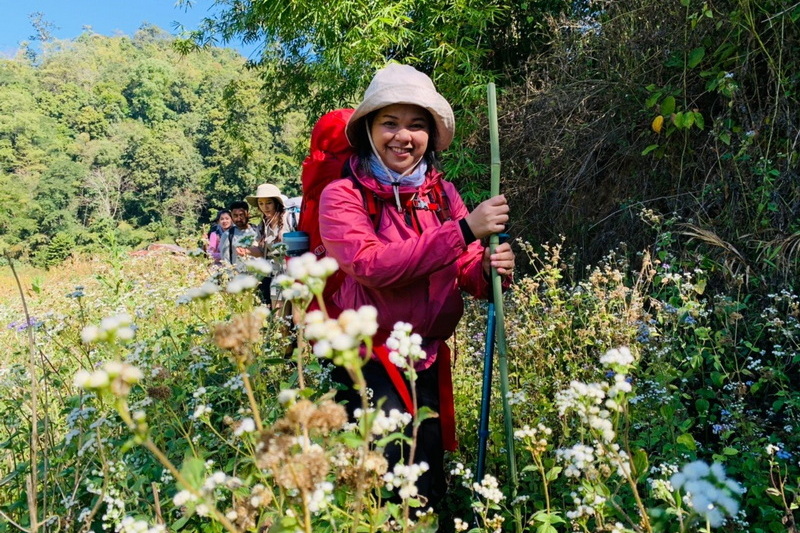
Conservation and Sustainable Development
Muang Pam village is a leading example of a community that integrates conservation with cultural resilience. Through collaboration with government agencies and NGOs, the village has developed guidelines for responsible tourism, forest protection, and agricultural sustainability.
In 2016, it was featured in a Bangkok Biz News special as one of the model eco-cultural villages in Mae Hong Son, recognized for preserving identity amidst modernization.
Getting There and Visiting Tips
How to Get There:
-
From Pai town: Drive 40 km west on Route 1095, then take a rural road to Tham Lod village, followed by a local road to Ban Muang Paem.
-
From Mae Hong Son city: Drive 90 km northeast on Route 1095.
-
Best accessed by 4WD vehicles; local transport or tour guides can also be arranged.
Best Time to Visit:
-
November to February offers cool weather, misty mornings, and green landscapes.
-
The rainy season (June–October) is great for trekking but may involve muddy trails.
Nearby Places
Known for its eco-friendly practices and tranquil environment, this village invites slow travel and deep cultural immersion.
A peaceful hill tribe village perched atop a ridge, offering panoramic sunrise views and serene


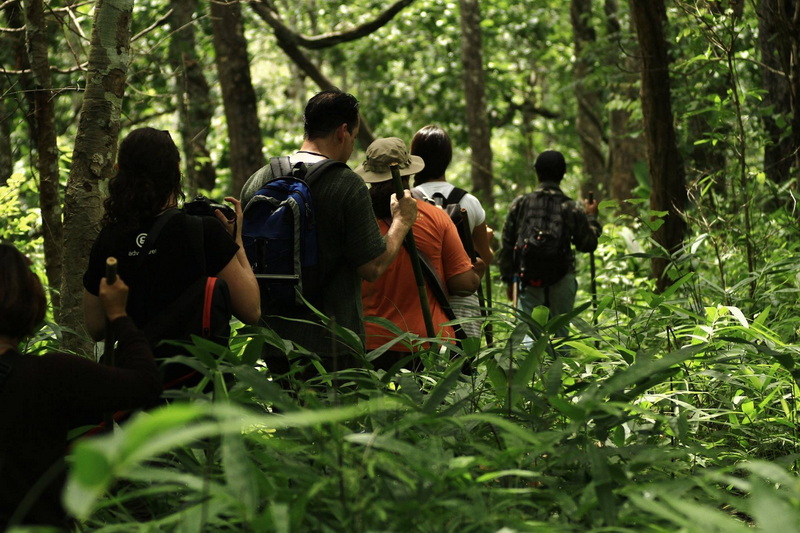
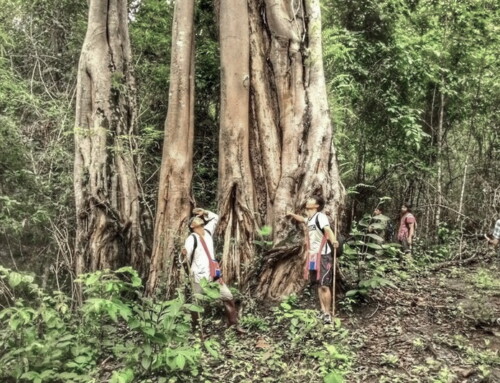





Leave A Comment